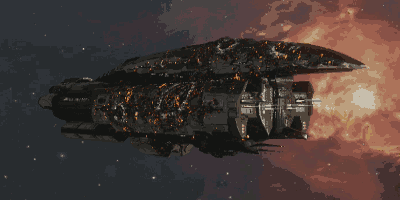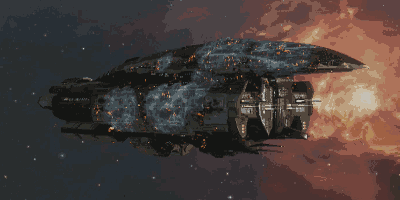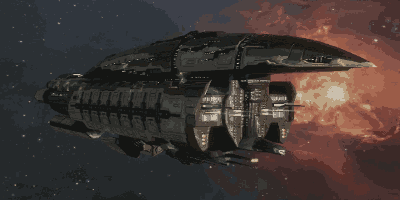Shuklaar Kyrdol
CEO of Breshig War Forge Consolidated


(Kinetic Capacitance Shield)

(Molecular Shield)

(Anticoncussion Field)

OUT OF CHARACTER INFORMATION
- Intent: To create an advanced, scalable shield generator for use by Breshig War Forge Consolidated, Strill Securities and select others.
- Image Source: Here and here.
- Canon Link: N/A.
- Permissions: N/A.
- Primary Source: Particle Shield, Molecular Shield, Ion Shield, Retribution Feedback Shield, KL-44 Commander Shield Projector, MD-FA Directional Shield, LV-F Deflector Shield, PulseScreen Quick-recharge Shield.
PRODUCTION INFORMATION
- Manufacturer: Breshig War Forge Consolidated.
- Affiliation: Breshig War Forge Consolidated and Strill Securities.
- Market Status: Closed-Market.
- Model: 'Caritr' Shield Generator.
- Modularity: Variants exist for starships and stations.
- Production: Minor.
- Material:
- Export Model: Molecularly-bonded Duranium frame, Agrinium mesh, Dallorian alloy, Molecularly-bonded Duranium-reinforced Duraplast composite armor plating, condensed-matter composite reinforcement, Ultrachrome electronics, wiring and circuitry, heat sink(s), cryoban cooling system, emergency capacitors and combat de-ionizer.
- Mandalorian and Internal Model: Stesr'gar frame, Agrinium mesh, Dallorian alloy, Stesr'gar-reinforced Duraplast composite armor plating, condensed-matter composite reinforcement, Ultrachrome electronics, wiring and circuitry, heat sink(s), cryoban cooling system, emergency capacitors and combat de-ionizer.
SPECIAL FEATURES
- Multiple Layers:
- Point-of-Impact: The shield makes use of an on-board droid brain that utilizes the ship's sensors to detect incoming threats and attempt to counter them with the point of impact shields.
- Pressor Field(s): Point-of-impact pressor fields utilize the ship's sensors to detect the highest velocity, highest mass projectiles and generates a pressor field to intercept them before they impact.
- EM Field(s): The generator projects EM fields in the path of incoming missiles that have slipped past point-defence systems.
- Utility Shields:
- Relativistic Shield(s)
- Atmospheric-friction Shield(s)
- Shift Shield(s)
- Starship-grade Thermal Shield(s)
- Shock Field (with reverse-polarity function)
- Primary Shield(s) w/ built in Grab Safety:
- Point-of-Impact: The shield makes use of an on-board droid brain that utilizes the ship's sensors to detect incoming threats and attempt to counter them with the point of impact shields.
- Capacitor Banks: Energy absorbed by the molecular or kinetic capacitance shield(s) is stored in capacitor banks and can be diverted to the main drives, maneuvering thrusters, hyperdrive, weapons, power-hungry on-board systems such as fabrication or back into the shields themselves.
- Four Emitters w/ Micropole reinforcement: The Caritr features four different emitters, one for each facing. Each emitter also covers the ventral and fore portion of their respective facing. Micropoles are installed where the field strength is the weakest, preventing any weak points in the shield.
- Fine Tuned Adjustments: Not only can the generator set different shield strengths for different facings, but it can also control shield regeneration rates for different facings independently.
- Generator Network: When multiple generators are used on the same ship, they can be configured to project shields to cover different facings, prioritize different facings or simply operate as a second layer of shielding.
- Manda Tactical Battlenet Compatibility: A single or multiple shield generators can be configured to allow a Manda tactical battlenet node installed on their host ship to control shield settings automatically.
- Multiple Settings: The shield features multiple settings, though these settings usually require power to be drawn in from other systems or from the capacitor banks.
- Power to Engines/Maneuvering Thrusters: Power is re-routed to the engines or maneuvering thrusters, increasing the craft's speed or maneuverability significantly (usually, by about a single rating). This is, of course, unless the maneuvering thrusters are chemical based.
- Feedback: The feedback mode responds to enemy attacks with an energy charge 'fired' back at the attacker, proportionately powerful to the weapons fire that hit the shield.
- Directional: Full shield power and regeneration can be directed to either the front facing of the craft or the rear. If additional generators are present, they can be used to protect both or a single flank.
- Fortress: As long as the ship remains stationary, the shield increases in strength almost exponentially (usually, up to three ratings).
- Defend: Shield strength is sacrificed for fast regeneration and the ability to project a shield around other ships, or boost the regeneration of aforementioned ship's shields.
- Fast Charge w/ Emergency Boost: Significantly boosts shield regeneration and provides a quick emergency boost at the expense of decreased shield strength.
- Strength Boost w/ Overcharge: Significantly boosts shield strength and provides an emergency boost to shield strength at the cost of notably decreased shield regeneration rate.
- Emergency Deflector Shield(s): Should the main shields lose integrity, an emergency deflector shield will be projected from multiple smaller projectors installed underneath the vessels hull. This shield is notorious for exhibiting damage 'bleedthrough' when under assault and can only stay active for a short period of time. Pouring more power into the shields will allow it to last longer at the risk of burning the emitters out.
STRENGTHS
- Resilient: The shield protects against a wide variety of threats with it's combination of shield and has strong field strength and coverage.
- Versatile: The shield's multiple settings and capacitor banks allow for the user to more options in an engagement than they traditionally would have, either giving them the option to shunt power into other subsystems or change the characteristics of the shield.
- Adjustable: The shield's four emitters can be configured for different shield strengths and regeneration rates for different facings, and additionally the Caritr functions well when used with other shield generators, especially other Caritrs.
WEAKNESSES
- Overload: While resilient, the Caritr is still a shield generator. Sustained fire is a surefire way to cause the shield type being attacked to overload and eventually collapse. Differing damage types, such as both projectile and energy damage, will cause a higher power drain as two of the shields are draining power, resulting in depletion of shield strength.
- Shield Penetrating/Bypassing Weapons: Field disruptors and other such technology can still bypass the shield and do damage directly to the ship itself.
- Power Hungry: Keeping three shields online is a significant draw on power, even with the strength of one or all shields lowered, whatever ship that mounts this needs a reactor that can keep up.
- Multiple Settings: Each pre-programmed defensive setting has a set of distinct disadvantages, forcing the crew to think carefully about which setting they choose to employ, when and if at all.
DESCRIPTION
The Caritr was developed as part of a project to increase the resilience of their capital warships, and was then scaled down for use on smaller craft. Of course, the question still remained of what were the required specifications of the new generator. Ships designed by Breshig War Forge Consolidated usually had very strong armor, designed to counter not just energy weapons, but also projectile and Ion weapons as well. However, in order to supplement that protection and give ships impressive protection for their various classes, designers decided that perhaps it was best to include a layered shield generator system.
The Caritr's latest update came during the company's term of service with the CIS and post the development of the Atiinir Kinetic Capacitance Shield. Added on was a whole suite of utility shield generator systems, point-of-impact pressor and EM field generators, anticoncussion field generator as well as the Atiinir. This layered approach provided a defense resilient in the face of multiple threats including but not limited to energy weapons, kinetic weapons, explosions, thermal weapons and collisions.
As with the previous version of the Caritr, the ability to shunt power from the capacitors to any subsystem as well number of pre-programmed settings were included to allow the generators to give crews more tactical options. The Naturally, given that it was originally designed to be mounted on capital ships and then scaled down later, the Caritr was designed to be used as part of a larger shield generator network, allowing for different generators to project shields to favor certain facings or merely act as a combined layered shield system. Additionally the shield's four emitters can be configured for different shield strengths and regeneration rates for different facings, and additionally the Caritr functions well when used with other shield generators, especially other Caritrs. That said, each pre-programmed defensive setting has a set of distinct disadvantages, forcing the crew to think carefully about which setting they choose to employ, when and if at all.
One of the more important features, at least for those who make use of the Manda tactical battlenet, is the shield's compatibility with said system. The shield can be configured to allow the Manda node installed on the host craft to completely allocate shield strength, relocation and even run any of the pre-programmed settings based on battlefield information entirely with as much or as little crew intervention as is preferred. This reduces pilot load in single pilot craft, giving the pilot far less to have to manage in the midst of combat.
As with the previous version, while resilient, the Caritr is still a shield generator. Sustained fire is a surefire way to cause the shield type being attacked to overload and eventually collapse. Differing damage types, such as both projectile and energy damage, will cause a higher power drain as two of the shields are draining power, resulting in depletion of shield strength. Field disruptors and other such technology can still bypass the shield and do damage directly to the ship itself. Finally, keeping three shields online is a significant draw on power, even with the strength of one or all shields lowered, whatever ship that mounts this needs a reactor that can keep up.
Last edited:











